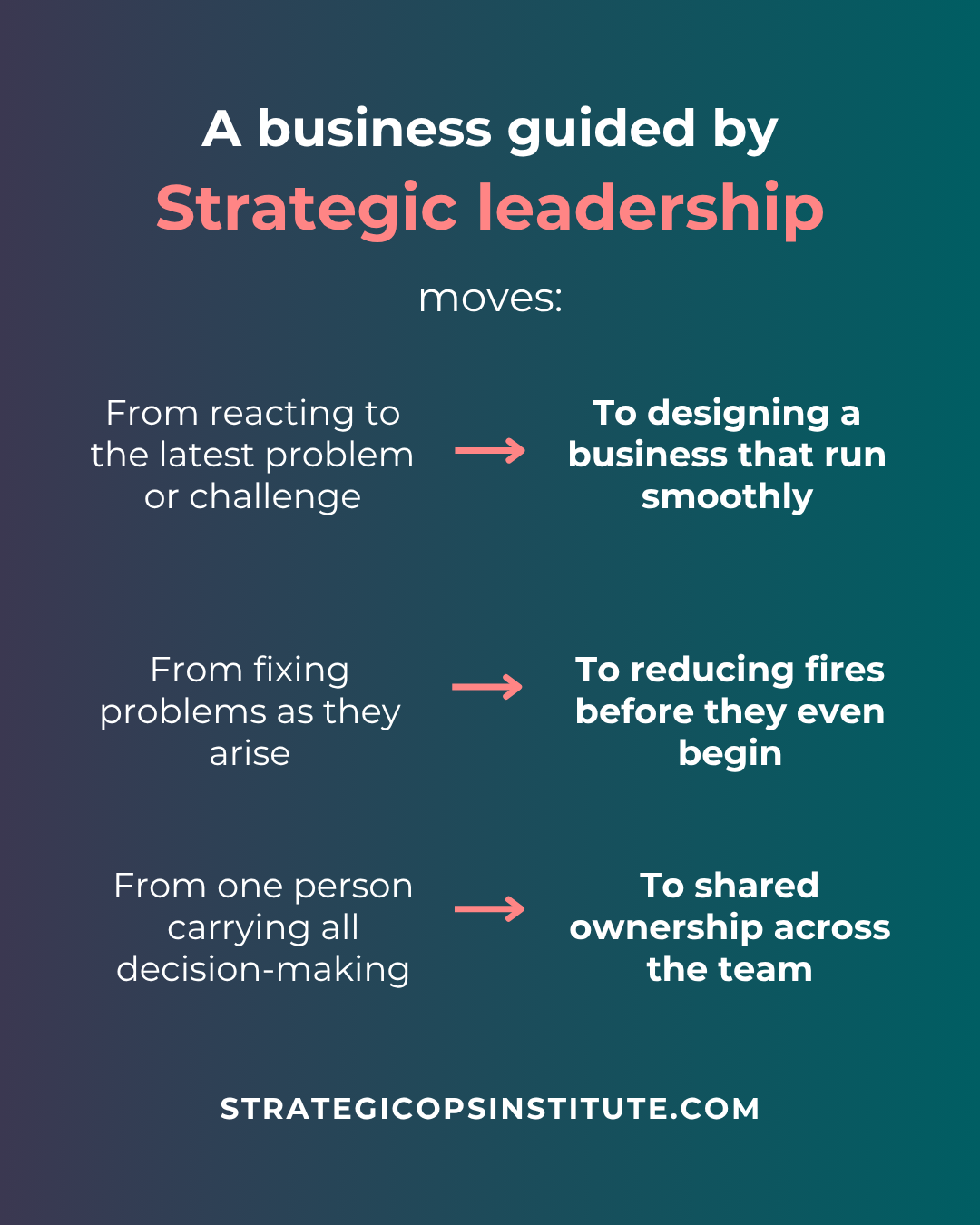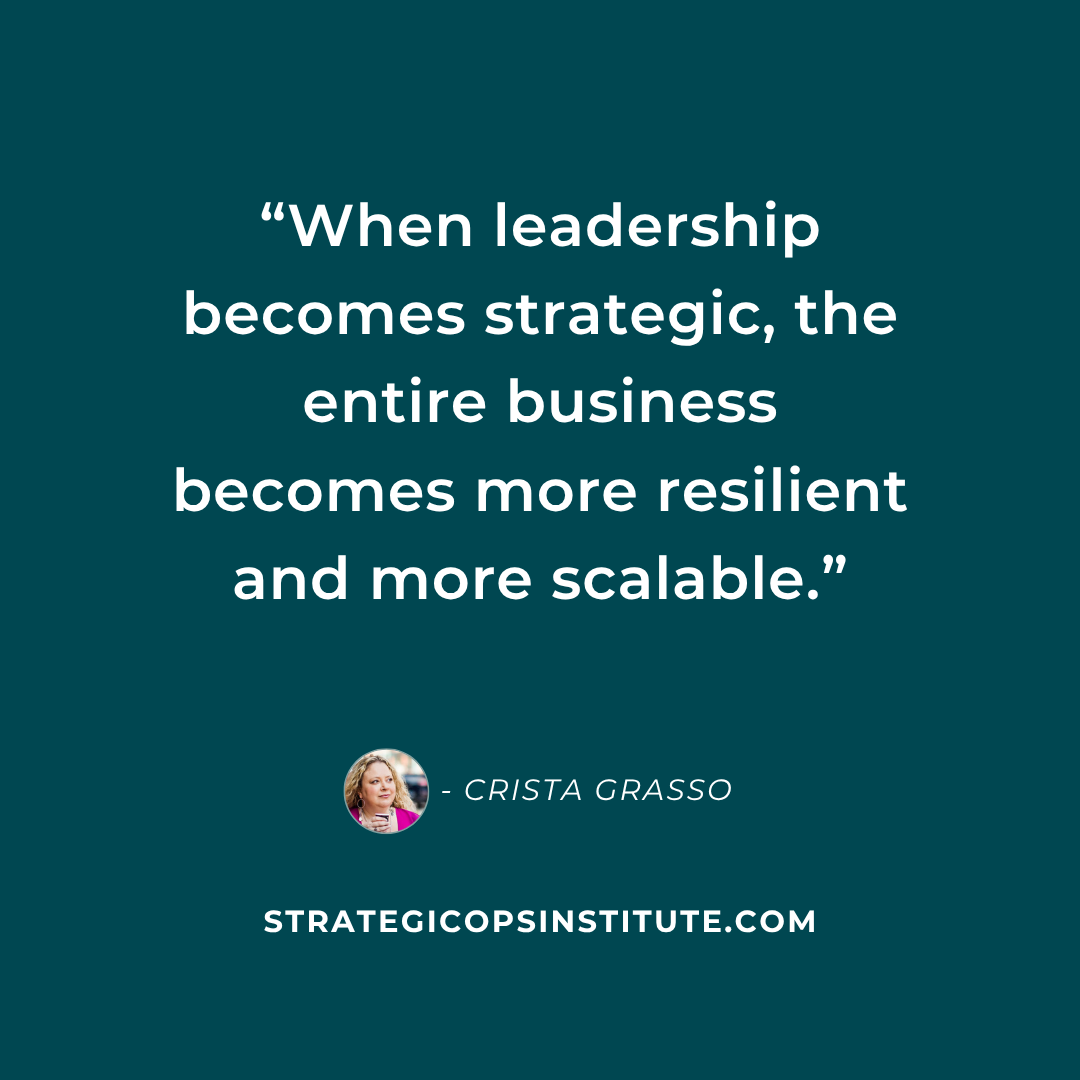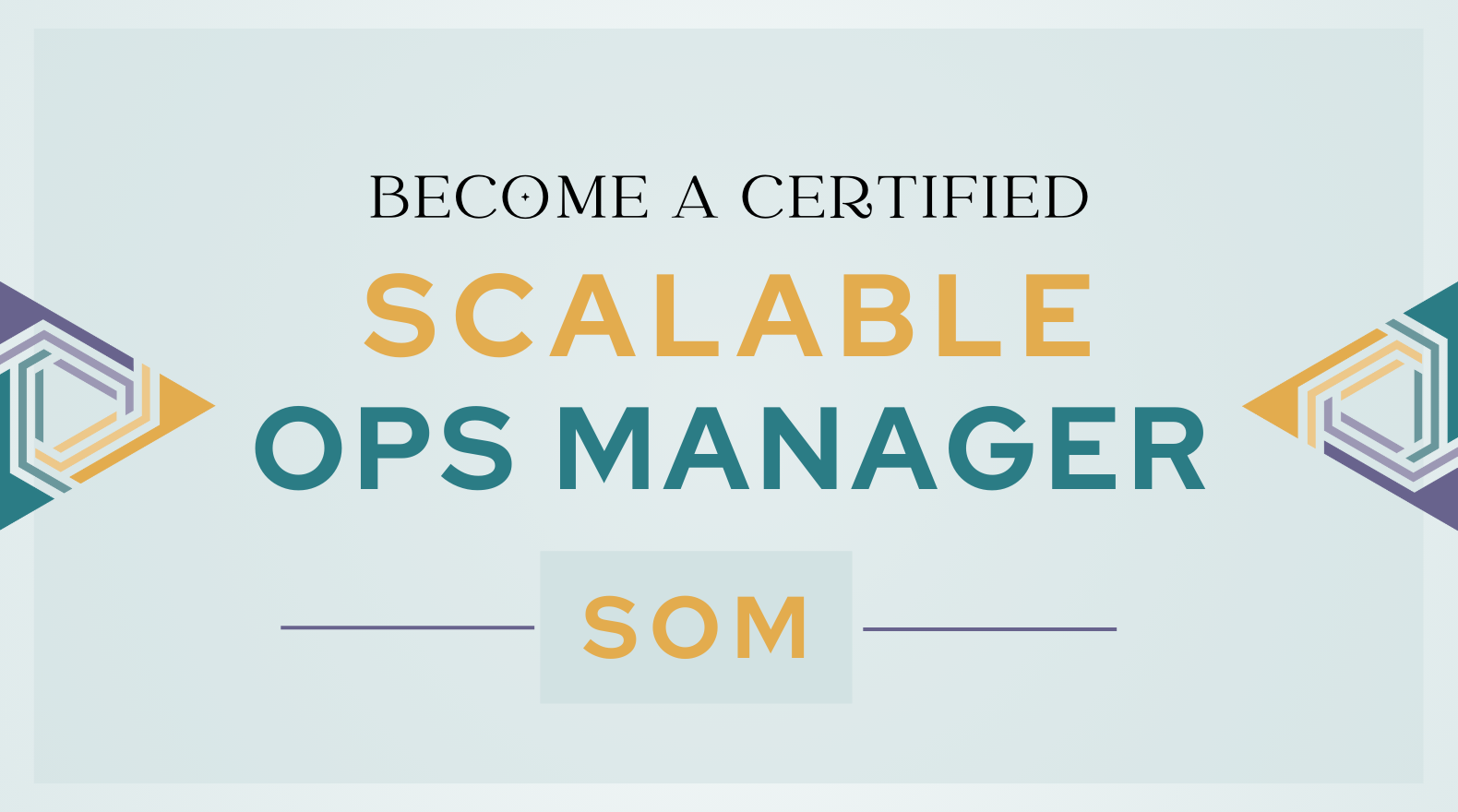
Have you noticed that as your business grows, the path forward relies less on what you personally deliver and more on how you guide, align, and empower?
There comes a stage where your effectiveness as a leader becomes the greatest determining factor of your business’s ability to scale.
This is where strategic leadership becomes the differentiator.
Businesses that evolve through strategic leadership unlock sustainable growth, stronger teams, and a more predictable path forward.
Those that don’t often plateau or carry unnecessary pressure on the founder’s shoulders.
This shift isn’t reserved for leaders of large teams.
It applies just as much to a founder leading solo as it does to someone running a team of fifty.
Strategic leadership is about intention, clarity, and the ability to turn vision into aligned action.
Growth becomes infinitely more sustainable when your leadership creates clarity instead of requiring your constant presence.
Let’s explore why strategic leadership matters, how it shapes your results, and the practical moves you can take to elevate the way you lead.
Why strategic leadership matters more than individual action
Most founders are excellent at ideating and selling people on their vision.
This builds early traction for the business, but that traction is not the same thing as scaling.
When a business depends on the founder’s personal output, the ceiling of its growth is fixed.
But when a business is guided through strategic leadership, the following happens:
- You shift from reacting to the latest challenge to designing a business that runs smoothly
- You shift from fixing problems as they surface to reducing fires before they start
- You shift from carrying decision-making on your shoulders to ensuring your team and systems carry shared ownership
Strategic leadership is the difference between business growth that feels heavy and growth that is sustainable and scalable.
Strategic leaders show up with intention, not urgency.
They make decisions that align the entire business, and they create a shared understanding of where the company is heading.
They create clarity for others, so the organization can operate without needing constant founder oversight.

How strategic leaders think and act
Strategic leadership is not a title or a personality type.
It is a set of habits practiced consistently.
The leaders who scale are not the ones who work the longest but rather the ones who think with depth, align decisions with long-term outcomes, and cultivate ownership throughout their organization.
Here are the behaviors that consistently set strategic leaders apart:
- They connect the dots
They understand how one decision impacts financial performance, hiring needs, capacity, client experience, and overall positioning. They look across the entire business, not just the area directly in front of them - They paint a clear picture
They articulate a simple, compelling direction. This clarity helps their team execute confidently and allows clients to understand the value and evolution of their work - They align vision, priorities, and actions
Their decisions move the business forward in focused, high-leverage ways. Nothing feels scattershot. Everything has a purpose - They build trust and encourage ownership
Instead of managing tasks, they create conditions where others take responsibility for outcomes. This reduces execution risk and strengthens the long-term health of the business
These habits form the foundation for scaling with intention instead of effort.
Four practical shifts to level up your strategic leadership
Below are four shifts you can make this quarter to show up more strategically in your business:
1. Move from reactivity to a 90-day strategic cadence
When you operate in constant reaction, the business becomes dependent on your availability.
A structured 90-day cadence changes that dynamic.
Establish a rhythm that includes quarterly priorities, monthly milestones and weekly visibility and progress reviews
This rhythm creates clarity while minimizing distractions from low-impact activities that feel urgent but do not meaningfully move the business forward.
A consistent cadence ensures you and your team stay aligned on what matters most.
2. Productize how you deliver value
Productizing is not about making your work generic.
It is about creating reliable, repeatable outcomes that your team can deliver confidently and consistently.
By standardizing the frameworks, steps, or phases of your core offers, you:
- Reduce decision fatigue
- Improve margins
- Boost client satisfaction through predictability
- Increase your ability to scale without adding complexity
Productization helps your clients understand what to expect while giving your team a clear structure to follow.
3. Hire and develop for ownership, rather than task execution
Scaling requires more than distributing tasks.
It also requires distributing thinking.
Hire and develop team members based on outcomes, not activities.
Give clarity around responsibilities, decision rights and authority levels.
When people understand what they own, they stop waiting for direction and start creating progress in the business.
This amplifies your time and establishes internal leadership that strengthens the entire organization.
This approach works best when supported by strong onboarding and a documented decision framework that ensures alignment even when you are not involved.
4. Create systems that let the business run without you
Every business benefits from systems, no matter the size of the team.
Document the processes you repeat most often.
Automate the tasks that do not require your judgment.
Create templates and workflows that increase consistency and reduce the need for real-time supervision.
Your time is best spent on strategy, vision, relationships, and innovation.
Systems give you the capacity to focus on the work that only you can do.

What changes when leadership gets strategic
When you invest in strategic leadership, the visible outcomes are easier to measure, and the hidden benefits are profound:
-
You increase your margins because delivery is predictable and efficient
-
You develop more resilient teams because ownership replaces micro-management
-
Faster decision-making occurs because there is alignment and less ambiguity
-
The business has better positioning because you can articulate the unique way you create value
These benefits compound and create a business that grows through intention.
How to Practice Strategic Leadership Starting This Week
You don’t need to overhaul everything at once.
Strategic leadership builds through small, consistent actions.
Start with these steps:
-
Pick one 90-day priority that will unlock capacity (examples include: productizing your flagship offer, hiring an owner-level role, or documenting a core delivery process)
-
Schedule a two-hour strategy session this week to map the actions that will move that priority forward
-
Run a single small experiment to shift ownership on one client project. Then measure this process and iterate
These moves are accessible and practical.
Repeated regularly, they create exponential progress.
Ready to Strengthen Your Strategic Leadership?
Strategic Leadership is one of the core pillars we focus on inside our SOL Collective community because it shapes everything that follows.
It's where you'll get additional tools, practical guidance, and a collaborative environment that supports implementation to make these shifts happen.
If you want to strengthen the way you lead, operate, and grow, join SOL Collective and experience what aligned, strategic leadership can unlock for you and your business.

by Crista Grasso
Crista Grasso is the Founder of Strategic Ops Institute and Lean Scaling Co, and host of the Simplify to Scale Show.
She specializes in training and certifying fractionals and consultants to be able to effectively and strategically scale the businesses they partner with and step into becoming the Strategy + Operations Leader (SOL) that small business founders are increasingly searching for.



